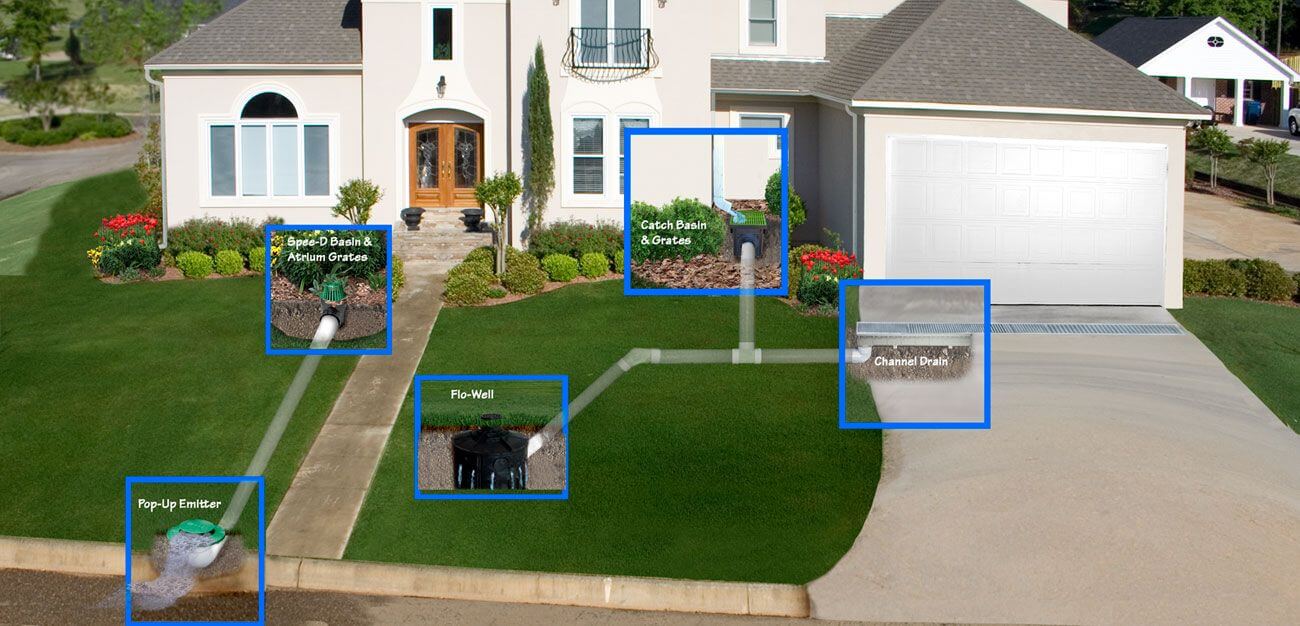When people see a home, they usually just see the beauty, architecture and interior design of the house. They don’t often think of the house’s drainage systems. But who does, right? However, the drainage system of a house is one of the most important things that help maintain the integrity of the structure.

So what are the different types of drainage system that you can use or install for your homes?
1: Surface Drainage System
This type of drainage is installed outside of your home to keep rainwater from pooling in your yard. They are shallow ditches of various widths that are positioned in a parallel pattern. It collects water from the surface and serves as a connection to the main drainage.
2: Subsurface Drainage System
These are also called French drain. Installing a subsurface drainage is more complicated than installing surface drainage. It requires digging deep ditches and then installing pipes under it. It also requires a collector drain that will contain the water from the underground pipes.
In many cases, you would also need a pump to extract the water collected and connect it to the main drainage system. Installation for this can be costly but it may be necessary depending on your situation.
They are useful in collecting excess water underground so that the soil around your home does not become saturated with water or waterlogged.
3: Downspout and Gutter Systems
This system is common and most modern houses and buildings already have a downspout and gutter system. The gutter, which is found in the roof of the house, is connected to a downspout that leads the collected water from the gutter to the ground. The water is often led to another drainage system, a surface drainage or a slope drainage, to keep the water from pooling around the house or at the base, near the foundation.
4: Slope Drainage System
This type of drainage system may be ideal for your house depending on the terrain of the area. This drainage system will take advantage of an already inclined terrain to easily drain the water away from your house. Pipes will be installed in strategic areas that eventually leads to the declined slope. Pipes used can be metal or plastic, but they have to be properly grinded to prevent sharp edges and keep it safe.
It is not unusual to have one or more drainage systems installed in the home. Oftentimes, they are even necessary to prevent easy and fast flooding around your home. Thus, it is important to find a partner that can evaluate your situation and provide you with the best solution possible like Extreme Epoxy Coatings. They can provide you the services you need and expect a great result.
If you live in an area that often gets heavy rainfall or you simply live in a low-lying area, and notice that your house gets flooded easily, then it is imperative that you have your drainage system checked.
Drainage systems are important because they keep excess rain water and wastewater away from your home. If these liquids are not properly disposed and allowed to pool near your house’s foundation, it could become your worst nightmare.
Water results in moisture. Moisture will result in termites, fungi and molds that can pose a dangerous health risk for you and your family. Moisture can also result in an untimely decay of your house. So even if it is natural to not be immediately mindful of a house’s drainage system, it is important to still be aware of its presence or lack thereof and should have a proper moisture control systems in your house.







I am glad to learn this valuable information
The article explains things in an easy-to-understand way and even tells you when to use each type of drainage. This information is super useful for anyone who wants to work on their home or deal with water-related problems. Thanks for sharing this helpful article